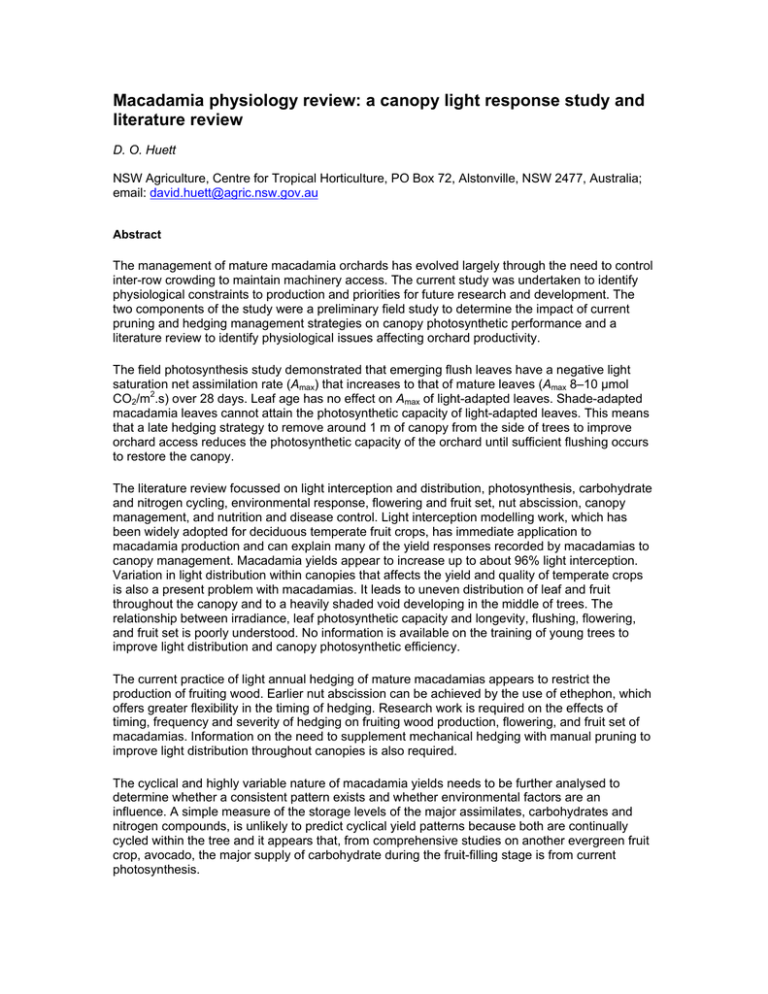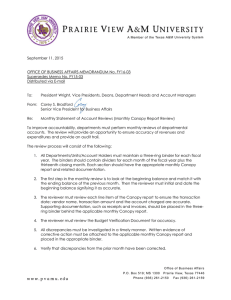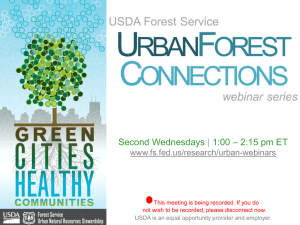Macadamia physiology review: a canopy light response study and literature review
advertisement

Macadamia physiology review: a canopy light response study and literature review D. O. Huett NSW Agriculture, Centre for Tropical Horticulture, PO Box 72, Alstonville, NSW 2477, Australia; email: david.huett@agric.nsw.gov.au Abstract The management of mature macadamia orchards has evolved largely through the need to control inter-row crowding to maintain machinery access. The current study was undertaken to identify physiological constraints to production and priorities for future research and development. The two components of the study were a preliminary field study to determine the impact of current pruning and hedging management strategies on canopy photosynthetic performance and a literature review to identify physiological issues affecting orchard productivity. The field photosynthesis study demonstrated that emerging flush leaves have a negative light saturation net assimilation rate (Amax) that increases to that of mature leaves (Amax 8–10 µmol CO2/m2.s) over 28 days. Leaf age has no effect on Amax of light-adapted leaves. Shade-adapted macadamia leaves cannot attain the photosynthetic capacity of light-adapted leaves. This means that a late hedging strategy to remove around 1 m of canopy from the side of trees to improve orchard access reduces the photosynthetic capacity of the orchard until sufficient flushing occurs to restore the canopy. The literature review focussed on light interception and distribution, photosynthesis, carbohydrate and nitrogen cycling, environmental response, flowering and fruit set, nut abscission, canopy management, and nutrition and disease control. Light interception modelling work, which has been widely adopted for deciduous temperate fruit crops, has immediate application to macadamia production and can explain many of the yield responses recorded by macadamias to canopy management. Macadamia yields appear to increase up to about 96% light interception. Variation in light distribution within canopies that affects the yield and quality of temperate crops is also a present problem with macadamias. It leads to uneven distribution of leaf and fruit throughout the canopy and to a heavily shaded void developing in the middle of trees. The relationship between irradiance, leaf photosynthetic capacity and longevity, flushing, flowering, and fruit set is poorly understood. No information is available on the training of young trees to improve light distribution and canopy photosynthetic efficiency. The current practice of light annual hedging of mature macadamias appears to restrict the production of fruiting wood. Earlier nut abscission can be achieved by the use of ethephon, which offers greater flexibility in the timing of hedging. Research work is required on the effects of timing, frequency and severity of hedging on fruiting wood production, flowering, and fruit set of macadamias. Information on the need to supplement mechanical hedging with manual pruning to improve light distribution throughout canopies is also required. The cyclical and highly variable nature of macadamia yields needs to be further analysed to determine whether a consistent pattern exists and whether environmental factors are an influence. A simple measure of the storage levels of the major assimilates, carbohydrates and nitrogen compounds, is unlikely to predict cyclical yield patterns because both are continually cycled within the tree and it appears that, from comprehensive studies on another evergreen fruit crop, avocado, the major supply of carbohydrate during the fruit-filling stage is from current photosynthesis. Several studies have failed to demonstrate irrigation responses by field-grown macadamias. The cyclical and variable yield of macadamias demonstrates that yield responses from field experiments cannot be expected in less than 5 years, even assuming adequate plot size, buffering, and replication. On the drier sites with light-textured soils in south-eastern Queensland, yield responses could be expected. Following the success of temperate fruit tree crop breeding programs and trends with other evergreen tree crops, macadamia breeding needs to focus on dwarfing clonal rootstocks that provide uniformity, and vigour control to improve cropping efficiency, to reduce canopy management costs and to minimise the reduction in yield following tree topping. Keywords: carbohydrate, flowering, light interception, net assimilation rate, nitrogen cycling, photosynthesis, photosynthetic photon flux density, pruning, nut abscission, rootstocks, water requirements. Australian Journal of Agricultural Research 55(6) 609–624 Submitted: 1 September 2003 Accepted: 19 April 2004 Published: 7 July 2004




